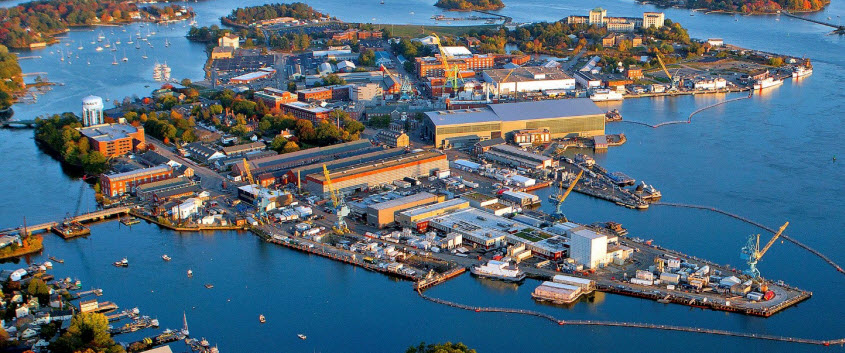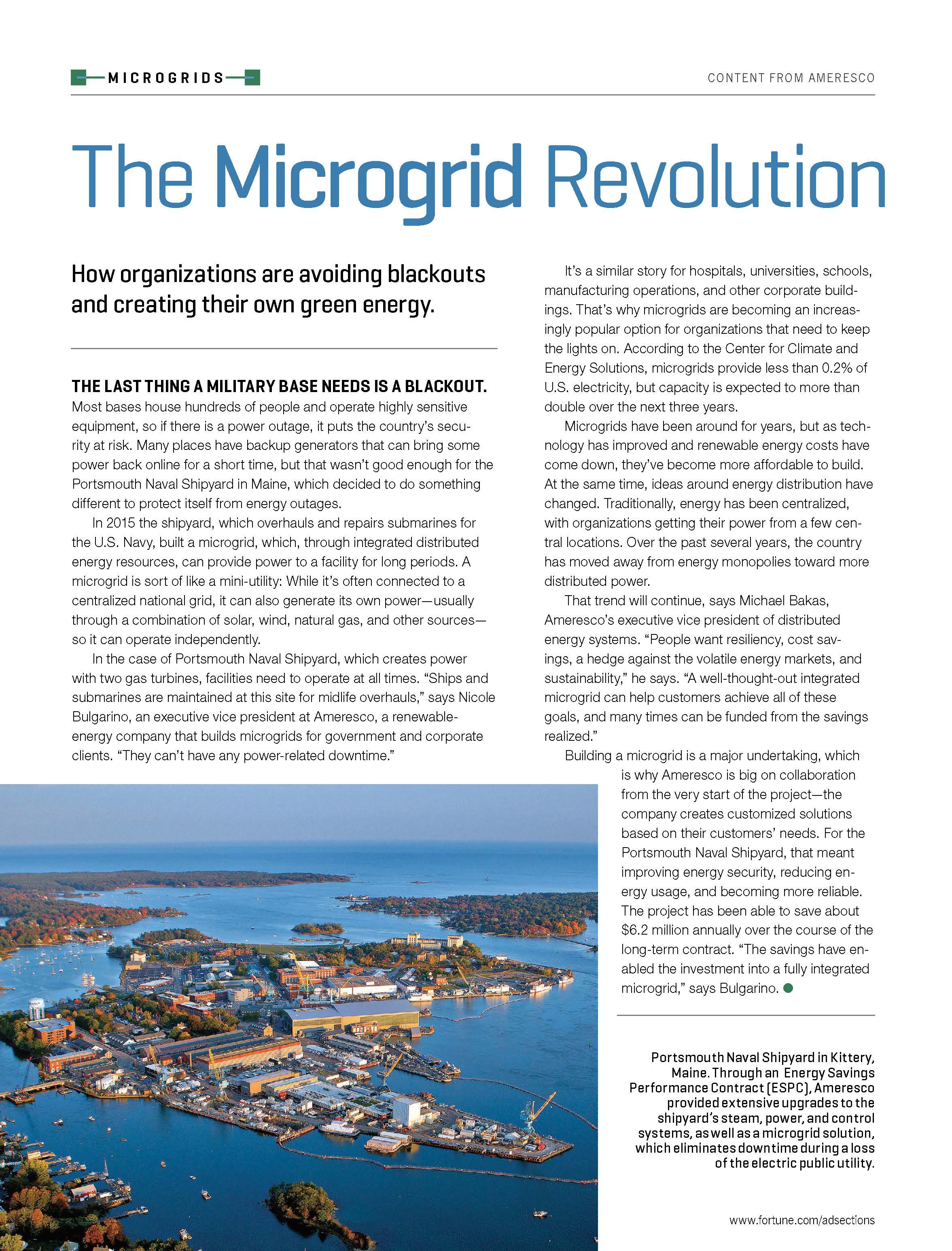Fortune: The Microgrid Revolution
As published in Fortune Magazine (written by Fortune Branded Content)
How organizations are avoiding blackouts and creating their own green energy.
THE LAST THING A MILITARY BASE NEEDS IS A BLACKOUT. Most bases house hundreds of people and operate highly sensitive equipment, so if there is a power outage, it puts the country’s security at risk. Many places have backup generators that can bring some power back online for a short time, but that wasn’t good enough for the Portsmouth Naval Shipyard in Maine, which decided to do something different to protect itself from energy outages.
In 2015 the shipyard, which overhauls and repairs submarines for the U.S. Navy, built a microgrid, which, through integrated distributed energy resources, can provide power to a facility for long periods. A microgrid is sort of like a mini-utility: While it’s often connected to a centralized national grid, it can also generate its own power – usually through a combination of solar, wind, natural gas, and other sources – so it can operate independently.
In the case of Portsmouth Naval Shipyard, which creates power with two gas turbines, facilities need to operate at all times. “Ships and submarines are maintained at this site for midlife overhauls,” says Nicole Bulgarino, an executive vice president at Ameresco, a renewable-energy company that builds microgrids for government and corporate clients. “They can’t have any power-related downtime.
It’s a similar story for hospitals, universities, schools, manufacturing operations, and other corporate build-ings. That’s why microgrids are becoming an increasingly popular option for organizations that need to keep the lights on. According to the Center for Climate and Energy Solutions, microgrids provide less than 0.2% of U.S. electricity, but capacity is expected to more than double over the next three years.
Microgrids have been around for years, but as technology has improved and renewable energy costs have come down, they’ve become more affordable to build. At the same time, ideas around energy distribution have changed. Traditionally, energy has been centralized, with organizations getting their power from a few central locations. Over the past several years, the country has moved away from energy monopolies toward more distributed power.
That trend will continue, says Michael Bakas, Ameresco’s executive vice president of distributed energy systems. “People want resiliency, cost savings, a hedge against the volatile energy markets, and sustainability,” he says. “A well-thought-out integrated microgrid can help customers achieve all of these goals, and many times can be funded from the savings realized.”
Building a microgrid is a major undertaking, which is why Ameresco is big on collaboration from the very start of the project—the company creates customized solutions based on their customers’ needs. For the Portsmouth Naval Shipyard, that meant improving energy security, reducing energy usage, and becoming more reliable. The project has been able to save about $6.2 million annually over the course of the long-term contract. “The savings have enabled the investment into a fully integrated microgrid,” says Bulgarino. ●




